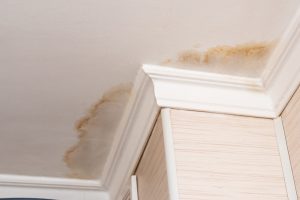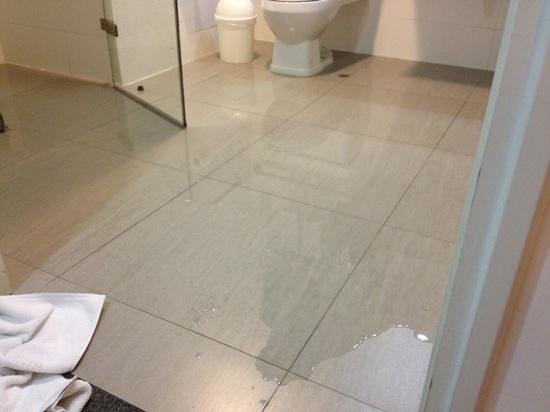What Leads to Humidity Destruction in the Bathroom
What Leads to Humidity Destruction in the Bathroom
Blog Article
The article author is making a few good pointers regarding How to Repair and Prevent Bathroom Water Damage? as a whole in this content beneath.

Water damage commonly happens in the shower room as a result of the water utilized day-to-day. Sometimes, the damage could be a little mold and mildew from the shower. Other times, it's enormous damages on your flooring. Whatever it is, it is always excellent to know the cause as well as stop it before it happens.
This guide will certainly experience several of the common reasons for water damage in the restroom. We will certainly likewise analyze what you can do to prevent these causes from harming your restroom. Allow's dive in.
These are the usual reasons you would have water damage in your washrooms and exactly how you can identify them:
Excess Dampness
It's great to have that long shower and also sprinkle water while you hem and haw and also act like you're carrying out, however often these acts can create water damage to your washroom.
Spraying water around can create water to head to edges as well as develop molds. View how you spread out excess dampness around, as well as when you do it, clean it up to avoid damage.
Splits in your wall surface ceramic tiles
Restroom wall surface ceramic tiles have been specially created for that function. They protect the wall surface from moisture from individuals taking showers. However, they are not undestroyable.
Often, your bathroom wall surface floor tiles crack as well as enable some wetness to permeate right into the wall. This might potentially destroy the wall if you do not take any kind of activity. If you observe a split on your wall surface floor tiles, repair it instantly. Do not wait till it damages your wall surface.
Overruning commodes and also sinks
As humans, often we make errors that could create some water damage in the bathroom. As an example, leaving your sink faucet on could trigger overflowing as well as damage to other parts of the bathroom with moisture.
Additionally, a damaged commode could cause overruning. As an example, a damaged bathroom manage or other parts of the tank. When this takes place, it can harm the flooring.
As soon as you notice an overruning sink or bathroom, call a plumbing technician to help manage it quickly.
Burst or Dripping Pipes
There are lots of pipes bring water to various parts of your shower room. Some pipes take water to the bathroom, the sink, the faucets, the shower, and lots of various other places. They crisscross the little location of the bathroom.
Occasionally, these pipes could get rustic and also ruptured. Various other times, human activity could cause them to leak. When this happens, you'll find water in the corners of your washroom or on the wall surface.
To detect this, look out for gurgling wall surfaces, molds, or mold. Call a specialist emergency situation plumbing to fix this when it occurs.
Roofing system Leaks
In some cases, the issue of water damage to the restroom might not come from the washroom. As an example, a roof covering leakage could create damages to the restroom ceiling. You can spot the damages done by checking out the water discolorations on the ceiling.
If you discover water stains on your ceiling, examine the roofing system to see if it's harmed. Then, call a specialist to assist address the problem.
Verdict
Water damage to your restroom can be irritating. Nonetheless, you can handle it if you stop several of the causes pointed out in this overview. Call a professional emergency plumbing professional if you notice any type of extreme damages.
Top 5 Reasons for Water Damage in Your House
Anyone who has had a leak before knows the feeling. That mix of panic, confusion and anger whenever unexpected damage pops up in your favorite place, home. The last place you want to bring you stress is your home.
We have combed through our data and have found the top 5 reasons water damage may pop up. Here they will be explained, and we even threw in some tips you can proactively use to prevent water damage in the first place, how you can spot it early, so it doesn’t evolve into permanent damage, as well as some advice on best practices for when water damage does occur.
Plumbing issues
Water damage is often caused by plumbing issues and it is easy to see, or not see why. Out of sight, out of mind. That’s why it’s important to inspect the plumbing systems in your home at least once a year to ensure that there aren’t any problems with hoses or pipe joints. While inspecting, keep in mind that water pipes do have a certain lifespan. Brass pipes can last for as many as 70 years while copper pipes can last for more than 50 years. The average lifespan for galvanized steel pipes is often between 20 and 50 years, while drain pipes are usually made of either cast iron (which can last for as many as 100 years) or polyvinyl chloride (PVC). Properly maintained PVC pipes can last indefinitely. Factoring in the age of your pipes is important to any inspection or educating your licenced plumber if you decide to bring in professional help.
Have you noticed your water bill increasing? If it is unusually high, that might be an indication of an undetected leak. Buying a water leak sensor that sends alerts to your phone is one way to safeguard your home. You can also check around your toilets, tubs, showers and sinks for any soft spots or moisture. Keep an eye out for loose tiles as well. If you have a dishwasher or a refrigerator with a water line, look for warped or discolored floorboards.
Anyone who has had a leak before knows the feeling. That mix of panic, confusion and anger whenever unexpected damage pops up in your favorite place, home. The last place you want to bring you stress is your home.
We have combed through our data and have found the top 5 reasons water damage may pop up. Here they will be explained, and we even threw in some tips you can proactively use to prevent water damage in the first place, how you can spot it early, so it doesn’t evolve into permanent damage, as well as some advice on best practices for when water damage does occur.
At Hippo, water damage was the top claims filed last year. But the good news is that in more than 90% of cases, water damage is preventable.CLICK TO TWEET
Looking out for plumbing problems, leaks and other issues is key to preventing water from destroying your home.
Plumbing issues
Water damage is often caused by plumbing issues and it is easy to see, or not see why. Out of sight, out of mind. That’s why it’s important to inspect the plumbing systems in your home at least once a year to ensure that there aren’t any problems with hoses or pipe joints. While inspecting, keep in mind that water pipes do have a certain lifespan. Brass pipes can last for as many as 70 years while copper pipes can last for more than 50 years. The average lifespan for galvanized steel pipes is often between 20 and 50 years, while drain pipes are usually made of either cast iron (which can last for as many as 100 years) or polyvinyl chloride (PVC). Properly maintained PVC pipes can last indefinitely. Factoring in the age of your pipes is important to any inspection or educating your licenced plumber if you decide to bring in professional help.
Have you noticed your water bill increasing? If it is unusually high, that might be an indication of an undetected leak. Buying a water leak sensor that sends alerts to your phone is one way to safeguard your home. You can also check around your toilets, tubs, showers and sinks for any soft spots or moisture. Keep an eye out for loose tiles as well. If you have a dishwasher or a refrigerator with a water line, look for warped or discolored floorboards.
Washing machine leaks
Unless you’re doing laundry (or trying out some of these laundry games), you probably don’t think twice about your washing machine. But if it breaks down, the results could be quite annoying. For example, if the supply hose is damaged or has a faulty connection to the wall or washing machine, more than 600 gallons of water could potentially spill out within an hour. Most people notice this before this amount of water is released, but we have all thrown in a load of laundry and started a project somewhere else in the home. Any amount of water could lead to significant damage, especially if your washing machine is located on the second floor of your home.
Bursting water pipes
During severely cold winters, pipes can freeze over and burst. That’s more likely to happen if you have certain types of pipes, such as swimming pool supply lines, water sprinkler lines and pipes with minimal insulation that run against exterior walls.
If temperatures tend to freeze in your area, be sure to protect your pipes. Insulate both hot and cold water pipes using heat tape or pipe sleeves available in your home improvement store. If you have water supply lines in your garage, keep the garage door closed as often as possible. Open kitchen and bathroom cabinet doors to allow warmer air to circulate. If you plan to spend some time away from your home, leave the heat on and set your thermostat to at least 55 degrees. You can’t control the weather, but you can put up a good fight to save your pipes.
Aging water heaters
We have all seen the scene in the movie where the family's basement is flooded by 2 ft or more and the father is yelling and cursing the water heater. Water heaters have a shelf life. Inspect your records to know exactly when it was installed and make a note physically on the water heater itself as well as in your phone to have it replaced every 10 years. It is also worth noting that if you are looking to upgrade, a tankless water heater can last as many as 20 years.
https://www.hippo.com/blog/top-5-reasons-water-damage-house/

As a serious person who reads about How to Repair and Prevent Bathroom Water Damage?, I imagined sharing that blog post was a great idea. Remember to take the opportunity to promote this write-up if you liked it. Thanks so much for your time spent reading it.
Stress less, ring us. Report this page